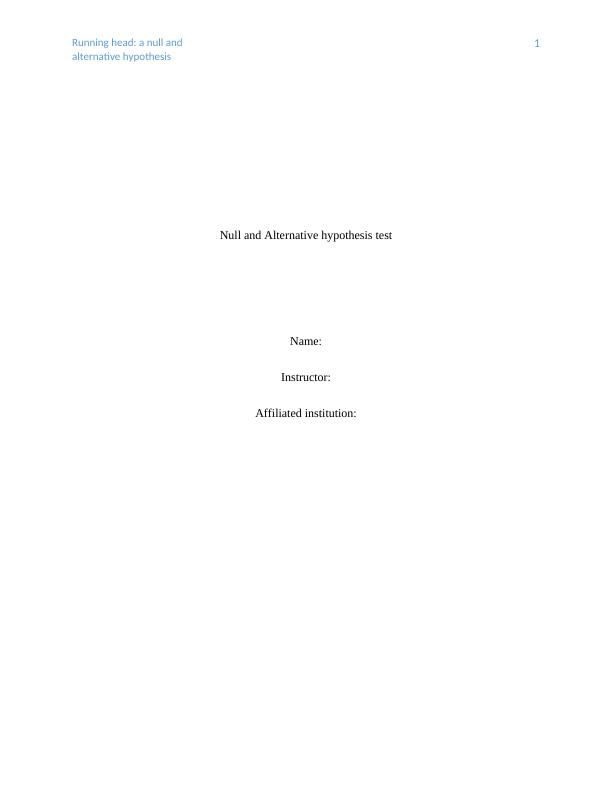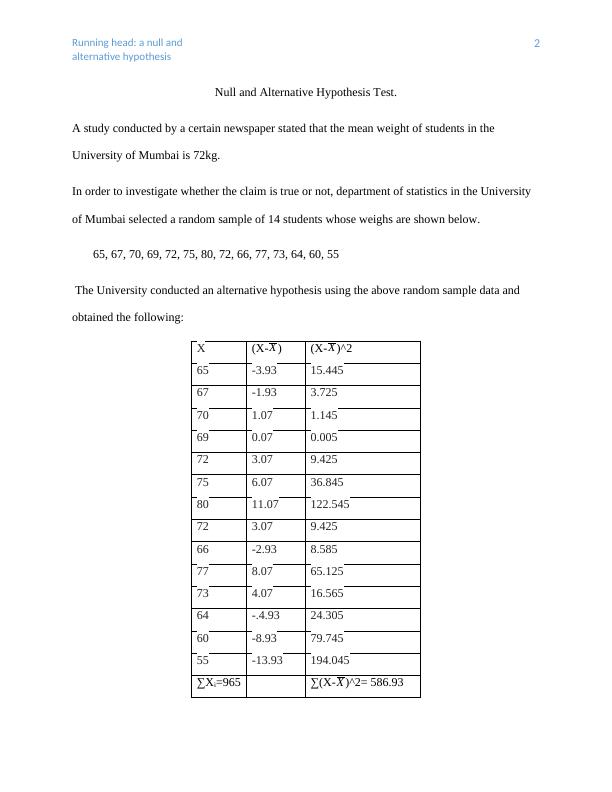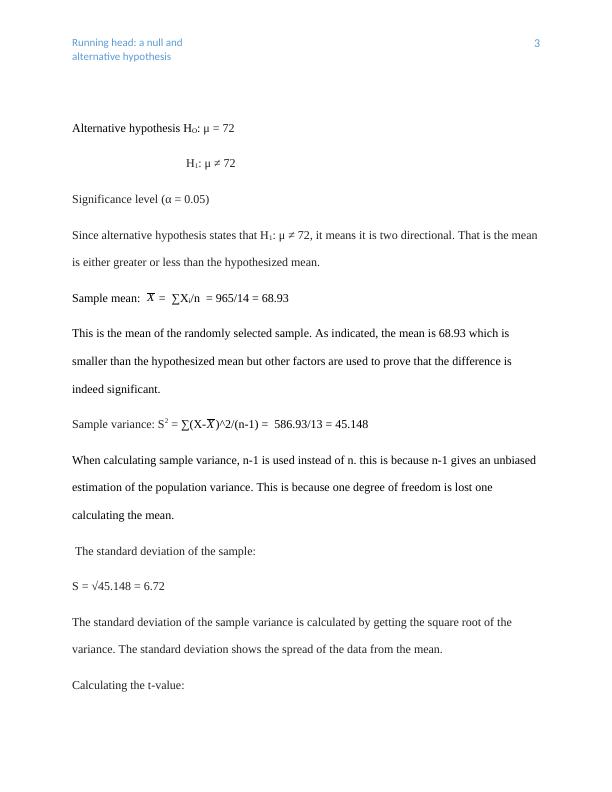Null and Alternative hypothesis test
6 Pages1132 Words409 Views
Added on 2023-04-26
About This Document
This article explains the concept of Null and Alternative hypothesis test with an example. It covers the significance level, sample mean, sample variance, standard deviation, t-value, decision rule, and conclusion. The article also discusses the difference between the sample mean and hypothesized mean, comparison between the sample and population characteristics, and the probability of type I and type II errors.
Null and Alternative hypothesis test
Added on 2023-04-26
ShareRelated Documents
End of preview
Want to access all the pages? Upload your documents or become a member.
Statistical Reasoning
|11
|1658
|58
Statistical Problems: One Sample t-test, Two Sample t-test, Two Sample Proportion z-test, One-way ANOVA
|8
|1638
|262
Statistics. Statistics Student name: Tutor name:. 1|Pag
|4
|455
|86
Population mean or mean score of school
|7
|983
|42
Homework 4 (Individual Exercise)
|7
|1226
|81
Solutions to Assignment
|9
|1717
|78



